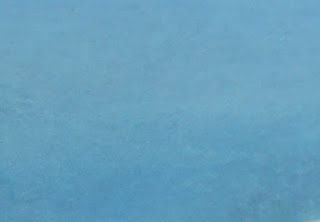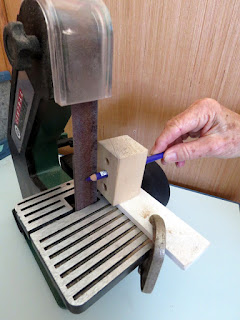We have looked at tools
and materials. Now let's see how we can
use them to create a painting that makes use of the best of both mediums: watercolor
and soft pastel
You might want to try this
subject just to get started, but the procedure is much the same with any
subject.
On watercolor or mixed
media paper create some loose beautiful watercolor washes on a wet sheet applying
the colors you wish to use. They should
be different than the color you will use for your subject to create surface
interest and more color excitement.
Keep your final subject in mind but be free with your color.
Note that I chose Aureolian
Yellow and Permanent Rose for the underpainting knowing that my
subject would be completed in shades of green.
Aureolian Yellow and Permanent Rose blend together on the
wet paper to produce a beautiful scarlet.
The yellow gives warmth and the rose gives contrast.
When the watercolor washes
are dry, indicate your main shapes with pencil.
Note: I have used a dark
pencil so you can see the drawn shapes in the photo. Use a light pencil for your work; it is only
to be a guide.
I have chosen to leave the
sky area alone, so I will work on the band of ocean next. Working from the top to the bottom helps to
keep the work clean. And remember we
want to stay out of any areas of watercolor we want to remain clean and
vibrant. Choosing three values of color
I apply them to the ocean shape, grading the color as I work towards the line
of vegetation on the land. Blend this
area keeping out of the other areas (tree and shrub). Use your favorite blending tool for tight
spots.
To keep a clean edge at the
horizon, use an eraser shield as you
blend the colors into the paper.
Next is the line of
vegetation. Use three different values
of muted greens and scumble the pastel stick so as to allow some of the
underpainting and texture of the paper to remain. Soften some of it if you
like.
Note how the watercolor underpainting glows through the vegetation.
Next, tackle the tree shape. Think: direction of growth. Use minimal strokes. Leave some of the underpainting showing
through.
Again, use three different values, blending where foliage is dense.
I think you can finish the
rest with no more specific directions.
Just remember that your lightest areas are created by the watercolor and
the pastel is used only to clarify the subject and act as a strong contrast to
the watercolor.























